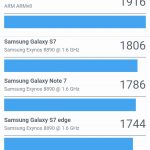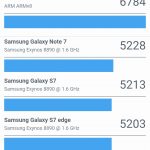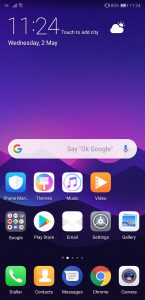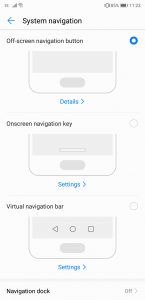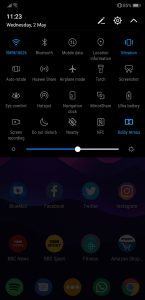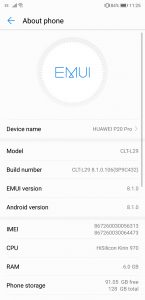Performance
The P20 Pro uses the same Kirin 970 that we first saw in the Mate 10 Pro, and that is no bad thing. Alongside this we have 6GB RAM and 128GB of internal storage.
Not surprisingly, the P20 Pro scores very similarly to the Mate 10 Pro in Geekbench 4 and Antutu – they do share all the same core specs, after all. This puts the P20 Pro roughly on-par with other Snapdragon 835-based phones, and in the real world you are very unlikely to experience any slow down. I didn't, and the generous 6GB of RAM also means switching between dozens of open apps remains speedy.
The P20 Pro also supports facial recognition to unlock the device. Huawei states this takes just 0.5 seconds, and in my experience that seems about right – it is very fast. It can slow down a bit in low-light situations, but it is certainly a great addition to the P20 Pro.
The fingerprint reader is also lightning fast – certainly faster than the facial recognition – which is great to see. I do prefer the fingerprint scanner to be on the back of the phone as I find that to be a more natural position, but the scanner itself worked flawlessly during my testing.
Software
Built on Android Oreo 8.1, the P20 Pro runs EMUI 8.1, which is Huawei's custom Android skin.
One of the more interesting aspects of EMUI is its ability to use the fingerprint reader as the home buttons. This is enabled under the ‘system navigation' setting and is actually quite simple – a single tap on the scanner takes you back, a tap and hold takes you to the home page and swiping left or right brings up the open apps.
There's also the ability to hide the notch, as I previously mentioned, which works surprisingly well given the screen is an OLED panel – you can only see the outline of the screen in direct sunlight.
I do think the overall UI could do with a bit of a revamp, though – the quick settings drop-down menu which looks like it's come straight out of 2011, while the Huawei launcher isn't as clean as Google's stock offering.
The overall experience of EMUI has definitely improved, though, as it feels less buggy and more responsive – even when compared with last year's Mate 10 Pro. I'd still take stock Android instead, but EMUI not a black mark against the phone like it has been in the past.
Be sure to check out our sponsors store EKWB here
 KitGuru KitGuru.net – Tech News | Hardware News | Hardware Reviews | IOS | Mobile | Gaming | Graphics Cards
KitGuru KitGuru.net – Tech News | Hardware News | Hardware Reviews | IOS | Mobile | Gaming | Graphics Cards





